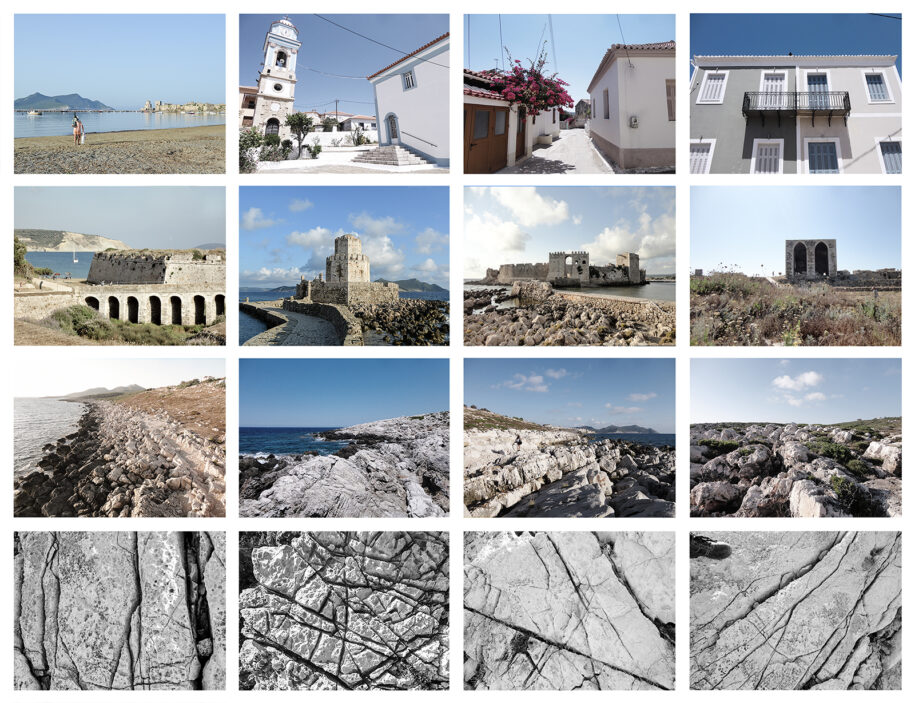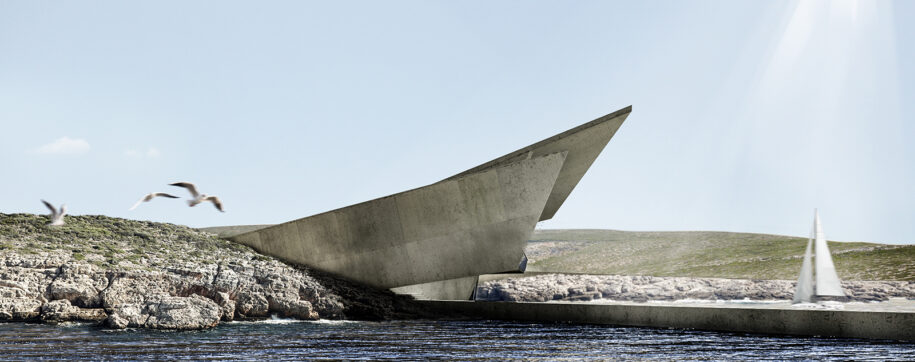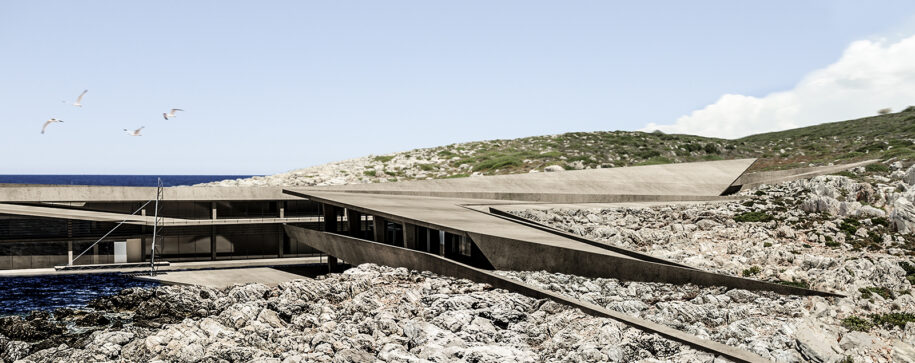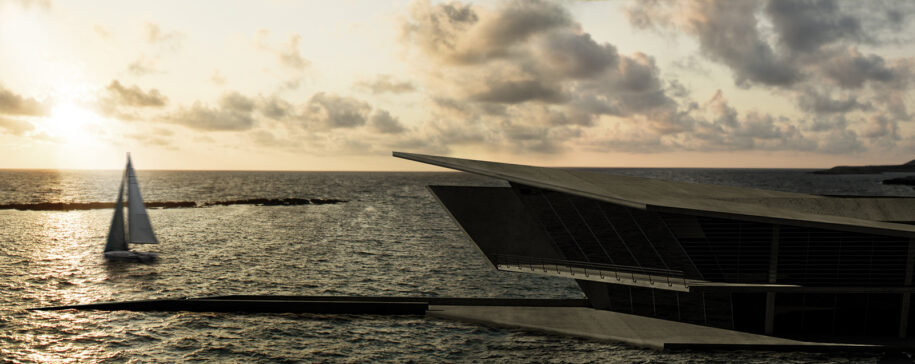Focusing on the underwater world and delving into the secrets of the seabed around Methoni and Messinian Oinousses, this dissertation proposes the creation of a building that will host the ongoing experiment of detecting so-called neutrino particles, as well as activities of the underwater archaeology.
-text by the authors
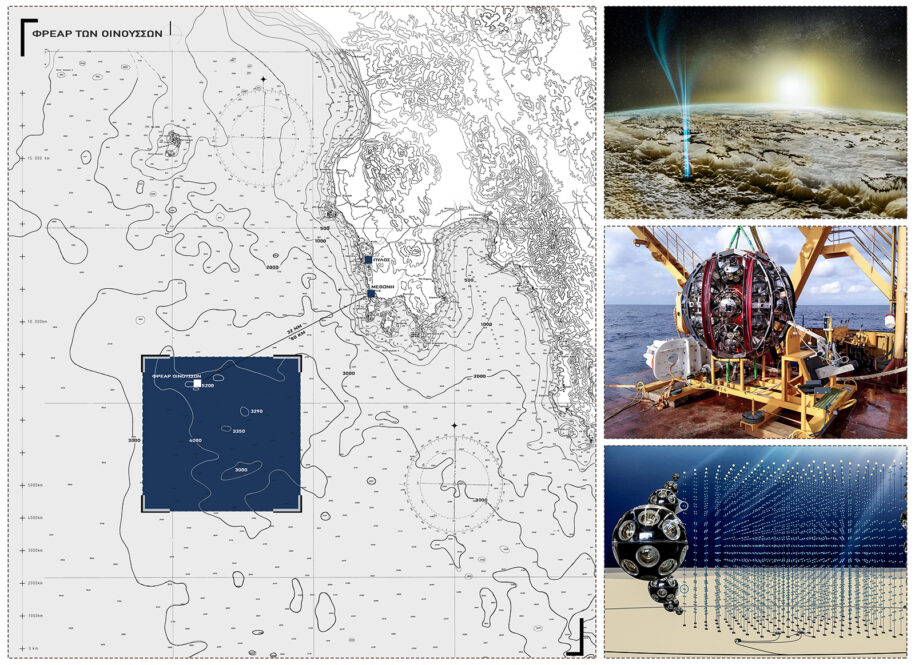
More specifically, the scientific project will take place at Calypso Deep (Frear Oinousson), the deepest part of the Mediterranean Sea, 32 miles south-west of Methoni, which is suitable for neutrino detection.
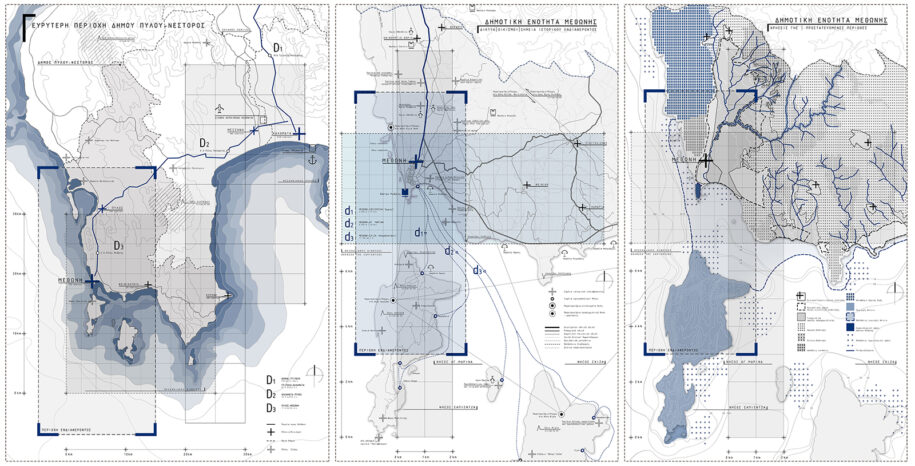
The scientific center includes spaces for the construction of underwater detectors, a machine shop, machine rooms, a data center, an electronic laboratory, study and research areas, meeting and lecture rooms as well as a training center for diving. Thus, the building will bring together the experimental community as a whole, will serve as a meeting point for the international scientific network, while proposing an interdisciplinary collaboration between scientific research and underwater archeology at the same time. Moreover, it will be open to the general public, inviting visitors to learn about the history of the experiment, take a look at the active research project, and use it as a starting point for sea excursions.
The building is located on the west of Methoni, in a barren coastal zone, detached from the city, characterized by steep cliffs, strong waves and winds – a condition that is consistent with the bold nature of the project. The intervention site is a natural creek, suitable for mooring ships, located just 400 meters from the “Iliodisi” – the western edge of the city and the endpoint of the visitor route leading from the city to the Castle. Intending to continue this touring narrative, the building connects to Methoni, creates a new destination, and attracts visitors through a coastal promenade.
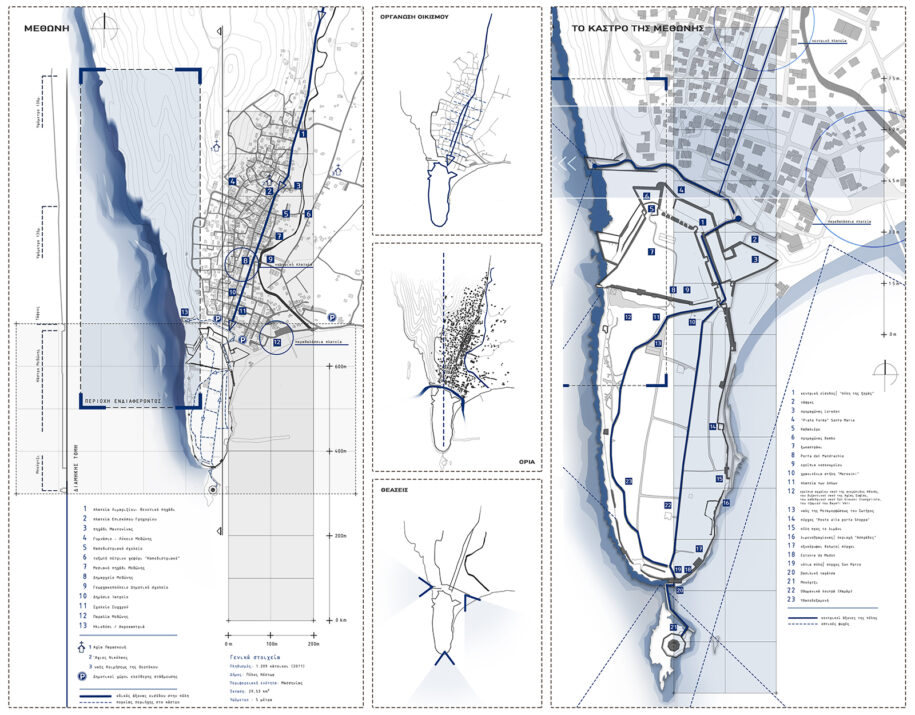
A conceptual thread connecting past, present and future was the core idea of the composition – a single line that registers in space as a public route.
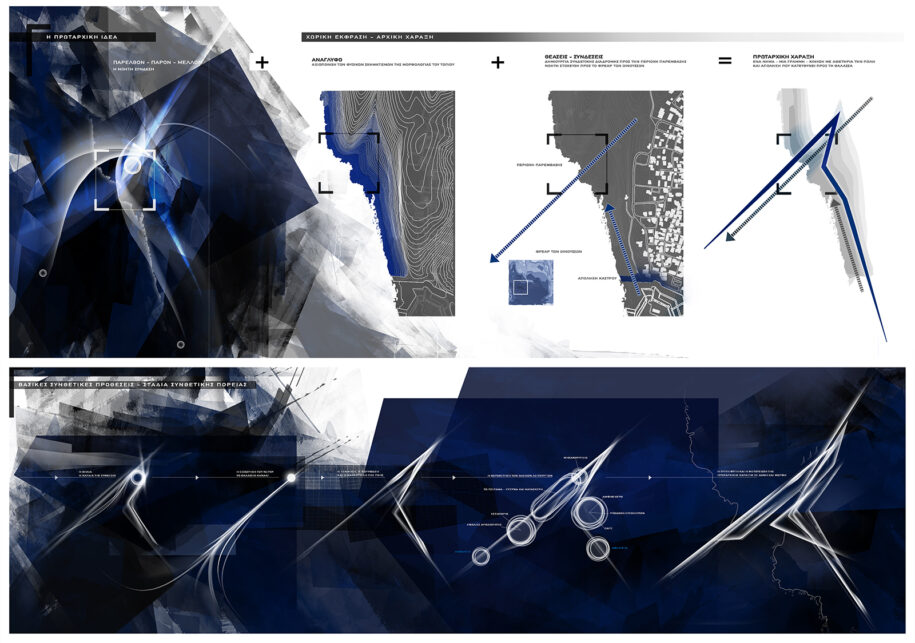
The architectural trace follows the triptych “birth-peak-sinking”, with the building structure emerging as an artificial continuation of the ground, following the descent of the creek and appearing like an arrow in the end, aiming at the Calypso Deep.
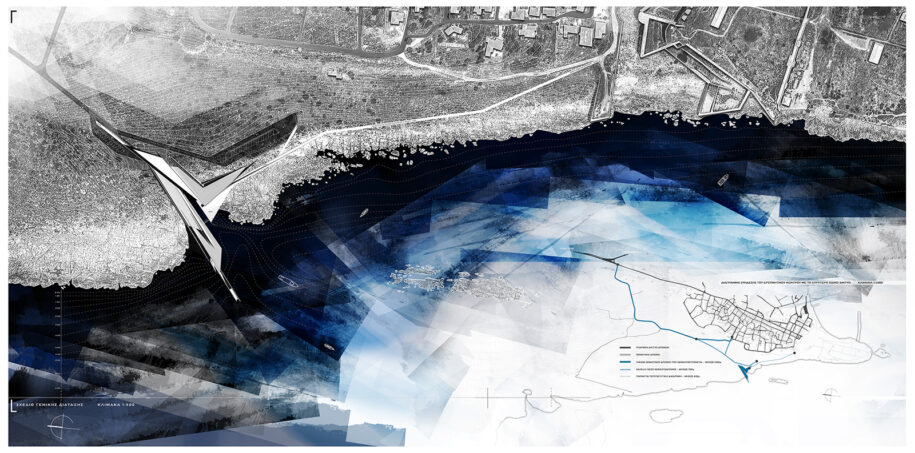
The harshness of the landscape and the sharpness of the rocks fertilize the architectural vocabulary with sharp angles, outbursts and nerve-like formations.
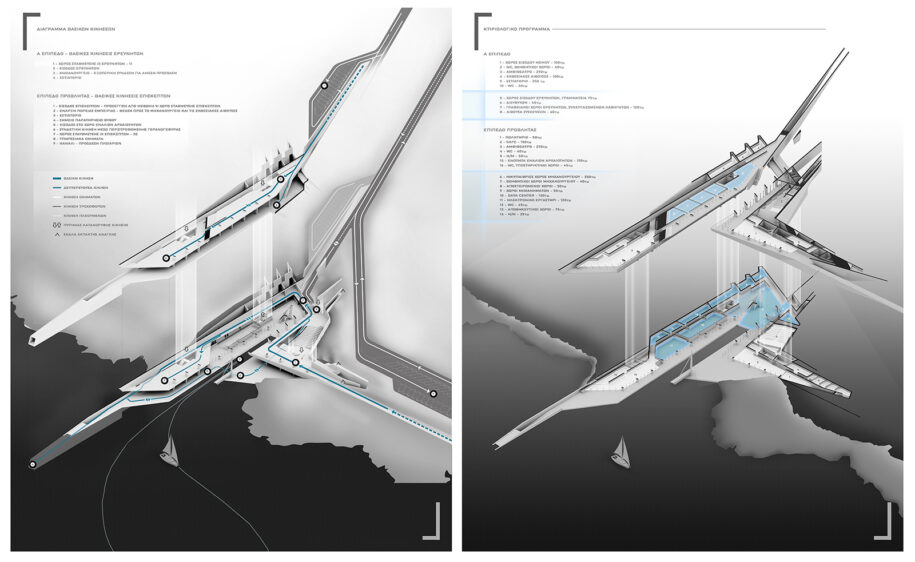
The “heart” of the experiment itself is the machine shop, located at the twisting point of the entire building’s mass surrounded by the rest of scientific spaces. A second entrance, exclusively for researchers-engineers, is considered a continuation of the northern road, separating their access to the building. Taking advantage of the shape of the coastline, the sea penetrates the land as a water channel, providing direct access to ships for loading and unloading equipment. As for the public functions, they are placed at the edges of the building, in cavities and peaks, while the area of marine antiquities, located also at finishing point of the entire structure, is in direct contact with the mooring point of the diving boats.
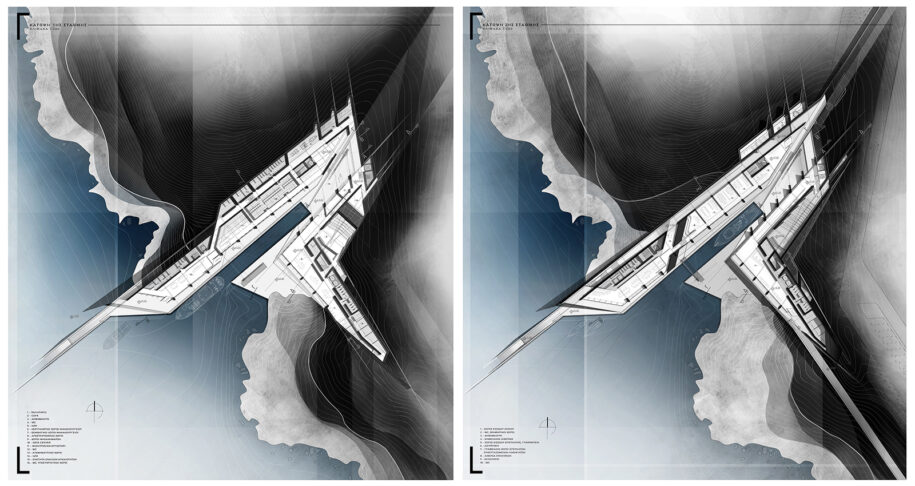
A touring route permeates the entire composition, allowing the public to familiarize with the interior space. Entering the building, the visitor has direct access to the amphitheater, as well as the cafe in the lower level. In continuation, there is a semi-outdoor route crossing the machine shop at an elevated level offering direct visual contact with the scientific activity. Next come the underground exhibition spaces, turning walkers towards a ramp leading upwards and providing access to a restaurant, located at the peak of the composition. Alternatively, the visitor descends to the pier’s level revealing the sea view. Finally, he “sinks” through a ramp leading to an underwater observatory.
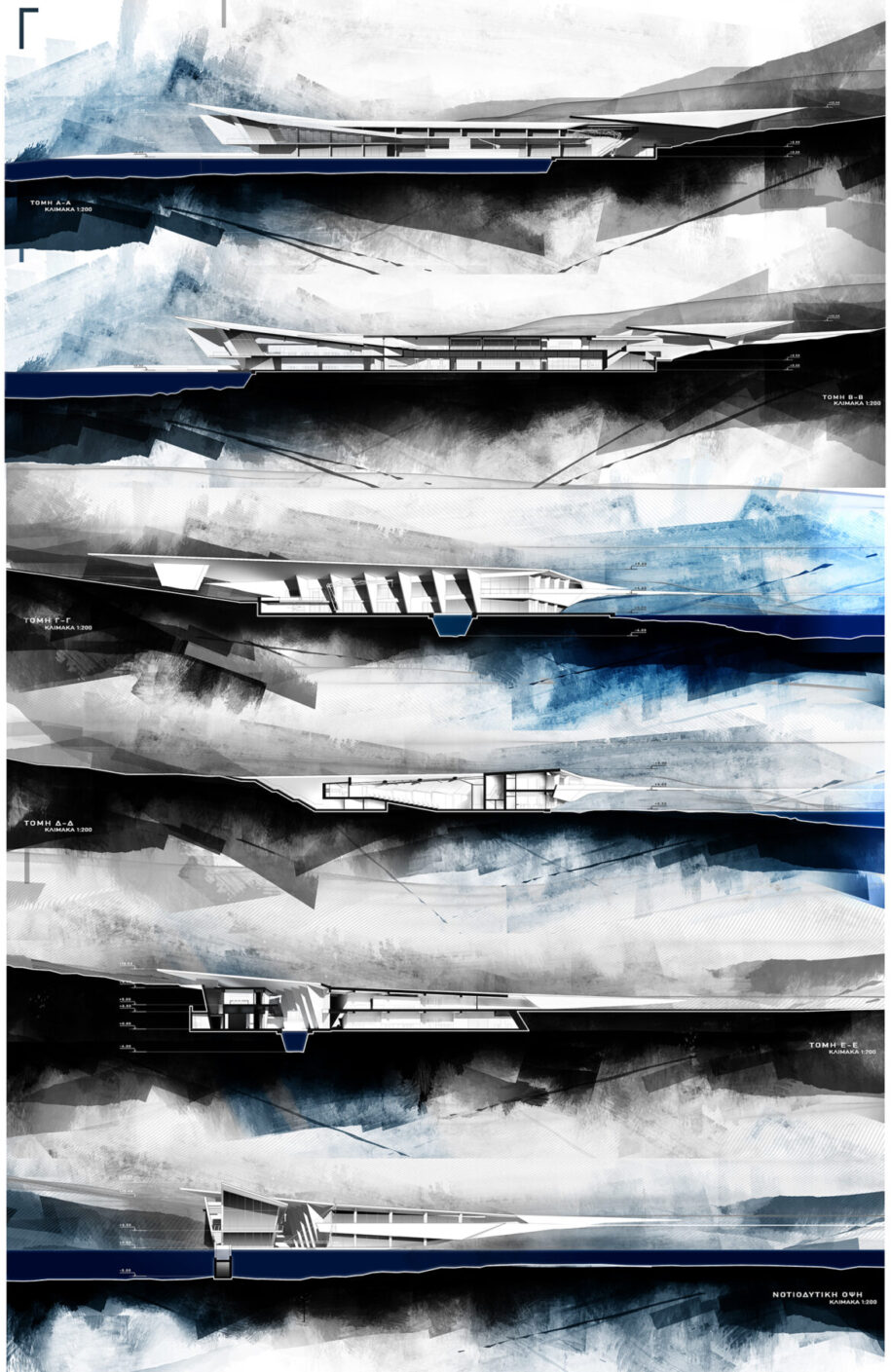
Facts & Credits
Project title Neutrino Research Center in Methoni
Students Labrini Lyrou, Panagiotis Chondros
Date September 2020
Course Diploma thesis
Supervisor Sofia Tsiraki
Institution School of Architecture, National Technical University of Athens (NTUA)
Στρέφοντας το βλέμμα στον υποθαλάσσιο κόσμο και εγκύπτοντας στα μυστικά του βυθού γύρω από τη Μεθώνη και τις Μεσσηνιακές Οινούσσες, η διπλωματική εργασία της Λαμπρινής Λύρου και του Παναγιώτη Χόνδρου προτείνει τη δημιουργία κτιριακής υποδομής που θα στεγάζει το πείραμα ανίχνευσης κοσμικών σωματιδίων νετρίνων καθώς και δραστηριότητες της ενάλιας αρχαιολογίας.
-κείμενο από τους δημιουργούς
Στο πλαίσιο μιας διεπιστημονική συνεργασίας, το κέντρο θα συμπεριλαμβάνει χώρους κατασκευής υποβρύχιων ανιχνευτών, χώρους μελέτης και έρευνας, καθώς και ένα κέντρο εξοπλισμού και εκπαίδευσης δυτών. Ταυτόχρονα, το κτίριο ανοίγει της πόρτες του στο ευρύ κοινό και αποκτά έντονο δημόσιο χαρακτήρα. Τοποθετείται δυτικά της Μεθώνης, σε έναν φυσικό κολπίσκο που απέχει μόλις 400 μέτρα από το “Ηλιοδύσι” – το σημείο κατάληξης της πορείας του επισκέπτη στο Κάστρο. Έχοντας ως πρόθεση τη συνέχιση αυτού του περιηγητικού αφηγήματος, το κτίριο δημιουργεί ένα νέο προορισμό.
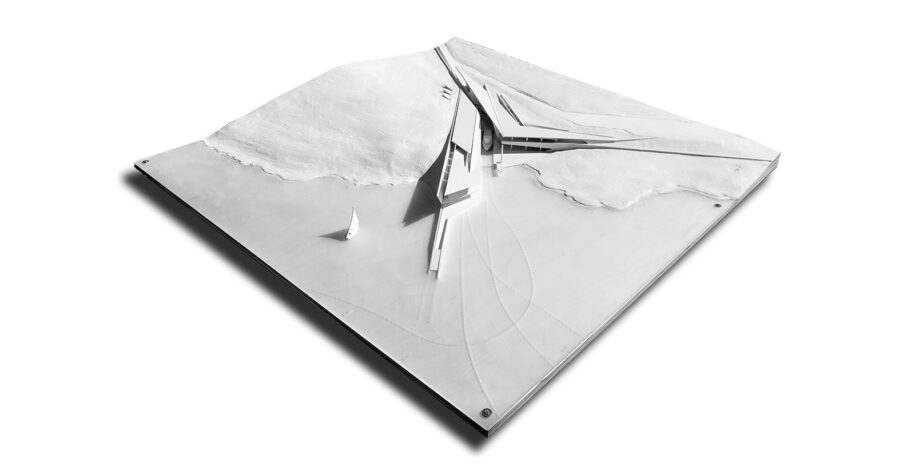
Κεντρική ιδέα της σύνθεσης αποτέλεσε ένα νήμα νοητό που συνδέει παρελθόν, παρόν και μέλλον και εγγράφεται στο χώρο ως δημόσια πορεία που μετουσιώνεται στη συστροφή της σε κτίριο.
Το συνθετικό ίχνος ακολουθεί το τρίπτυχο “γέννηση-κορύφωση-καταβύθιση” και το αρχιτεκτονικό λεξιλόγιο εμπλουτίζεται από την ακρότητα του τοπίου και την αιχμηρότητα των βράχων.
Στη θηλιά της βασικής χάραξης, τοποθετείται η “καρδιά” του πειράματος, το μηχανουργείο, με τη θάλασσα να εισχωρεί ως αυτό δημιουργώντας ένα υδάτινο κανάλι. Μια πορεία περιηγητικού χαρακτήρα διαπερνά όλη τη σύνθεση, επιτρέποντας στο κοινό να συνδιαλλαγεί με τους εσωτερικούς χώρους, να ενημερωθεί για την ιστορία του πειράματος, να ρίξει μια ματιά στο δραστήριο ερευνητικό έργο, να προσεγγίσει μια αφετηρία θαλάσσιων εξορμήσεων καθώς και ένα υποθαλάσσιο παρατηρητήριο.
Στοιχεία έργου
Τίτλος εργασίας Αόρατης Ύλης Ανιχνεύσεις | Κέντρο Έρευνας και Μελέτης Νετρίνων στη Μεθώνη
Φοιτητές Λαμπρινή Λύρου, Παναγιώτης Χόνδρος
Εξεταστική περίοδος Σεπτέμβριος 2020
Μάθημα Διπλωματική εργασία
Επιβλέπουσα καθηγήτρια Σοφία Τσιράκη
Σχολή Τμήμα Αρχιτεκτόνων Μηχανικών, Εθνικό Μετσόβιο Πολυτεχνείο (ΕΜΠ)
READ ALSO: People and Metropolis of the future _ Examples in Science Fiction | Research Thesis by Aliki Tzouvara
